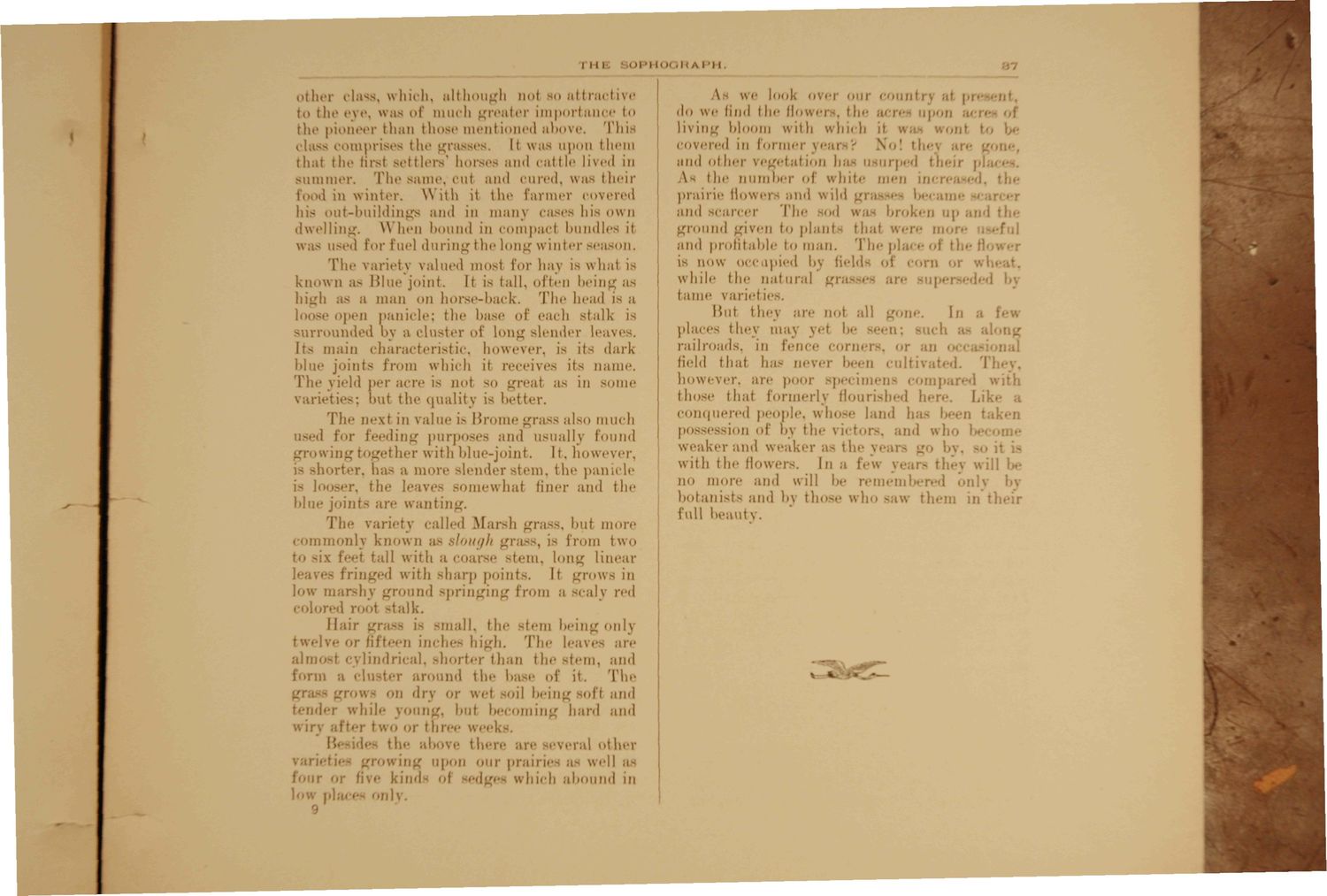| |
| |
Caption: Sophograph - 1891
This is a reduced-resolution page image for fast online browsing.

EXTRACTED TEXT FROM PAGE:
1111 lOOHAPH. / other class, which, although no! BO attractive to the eye, was of much greater importau to the pioneer than those mentioned above. Thi class auprises the grasses, li was upon them 1 thai di<' hrsl set t lera hor ad cai i le In ed in summer. The same, cut and cured, was their t I in N inter. With it t he Parmer covered N hia it-buildings and in man} cases his own dwelling. When bound In compact bundles it w ised for fuel during the long winter season. The variety valued mosl for h;i\ ia whai is known as Mine joint. It is tall, often being as high as a man on horse-back. The head ia a 1. open panicle; the base of each stalk is irrounded by a cluster of long slender leaves. It- main characteristic, however, is its dark hli lints from which it receives its name. The vield per acre is not so great as in some •-: luit the quality is better. Tim next in value is Brome grass also much n- I for ft ling purposes and usually found growing together with blue-joint. It. however, is B1 rter, Baa a more slenderstem, the panicle leu r. the leaves mewhat finer and the lue joints are wanting. The van v called Marsh grass, but more immonlj known a \loutjh gra^s, is from two x feet tall with a co tem, long linear fringed with sharp point-. It grows in >w marshy ground springing from o ily red I r \ we look i oui count u \>i< - of < > we find t he Honei . t In < l In ing bloom \\ if h which it •• covered in former j eai N ' th< and "I her \ i etal ion In \r\ j As the number of white mi in I, th« prairie AOM er* iind w ild r and er rhe wl w ground given to plant - that m ful and profitable to man. The pi is DOW occ ipied bj fielda i rn while the natural a o tame varietie But thej not all >ne. In a place t he\ may \ et be en; h railroads, in fern rnei . or an field that has never D cultiv 1. Tl however, are poor -\ imena comp h those that fonnerh flourished ii Like conquered people, \\ ho land hi n n pion of by t he vi( »rs, and wl weakerand weaker as the y< rs by, so it with t In- flowers. I • a few \ • I :11 no more and w ill be re mem d nly botanists and bj t hose wh< m in tl r full beaut \. is -mall, the m being onl) nf i inch( I gh. Tl leave almi lindrical, shoi r than I he tem, and m a cl tei mnd the b t it. The on dry or wet »il being oft and ••• h i l e i. but be ming hard and in .J- t In eks. I' f1 th< \eral olher arii upon iin prairie or fi kind oi which abound in LT;I— Hair 9 pi; n\\.
| |